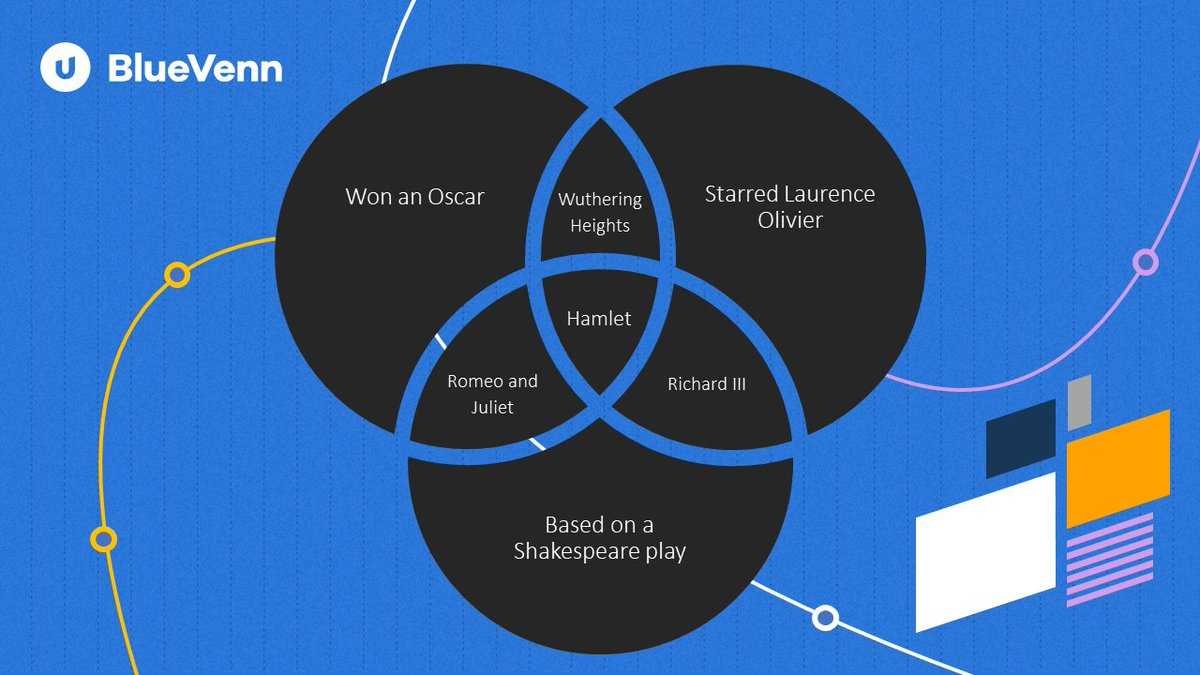
One of William Shakespeare’s most famous plays, “Romeo and Juliet” has been studied, analyzed, and performed countless times since its creation in the 16th century. The tragic tale of two star-crossed lovers from feuding families has captured the hearts of audiences around the world. One popular way to analyze and compare the characters and themes of the play is through the use of a Venn diagram.
A Venn diagram is a visual tool that represents the similarities and differences between two or more subjects. In the case of “Romeo and Juliet,” a Venn diagram can be used to explore the similarities and differences between the various characters, such as Romeo and Juliet themselves, as well as the themes of love, fate, and feuding that run throughout the play.
By visually organizing the information in this way, students and scholars can better understand the relationships between the characters and themes, as well as make connections and draw conclusions about the overall message of the play. The Venn diagram allows for a comprehensive analysis of the play, breaking it down into its key components and providing a clear visual representation of how they intersect and relate to one another.
Romeo and Juliet Venn Diagram
In the tragic play “Romeo and Juliet” by William Shakespeare, the main characters Romeo and Juliet are often compared and contrasted. One way to analyze and visualize their similarities and differences is through a Venn diagram.
Romeo: Romeo, a young and impulsive Montague, is characterized by his passionate nature and romantic ideals. He is deeply in love with Juliet and is willing to risk everything for their relationship. Romeo is known for his poetic language and his tendency to act on emotions rather than reason.
Juliet: Juliet, a young and obedient Capulet, is also deeply in love with Romeo, but she approaches their relationship with a more pragmatic mindset. She is willing to defy her family and society’s expectations to be with Romeo, but she also shows maturity and cleverness in her decisions.
- Similarities:
- Both Romeo and Juliet are passionate and deeply in love with each other.
- They are both willing to go against their families’ feuding to be together.
- Both characters experience intense emotions and are willing to take risks for their love.
- They both ultimately meet tragic ends due to their feuding families and the circumstances surrounding their relationship.
- Differences:
- Romeo is more impulsive and driven by his emotions, while Juliet approaches their relationship with a more practical mindset.
- Romeo is known for his poetic language and romantic ideals, while Juliet shows maturity and cleverness in her decisions.
- Juliet is more obedient to her family and society’s expectations, while Romeo defies societal norms in pursuit of his love for Juliet.
In conclusion, the Venn diagram helps us visualize the similarities and differences between Romeo and Juliet. While they both share a deep and passionate love, their individual personalities and approaches to their relationship highlight the complexities of their characters.
Overview of Romeo and Juliet
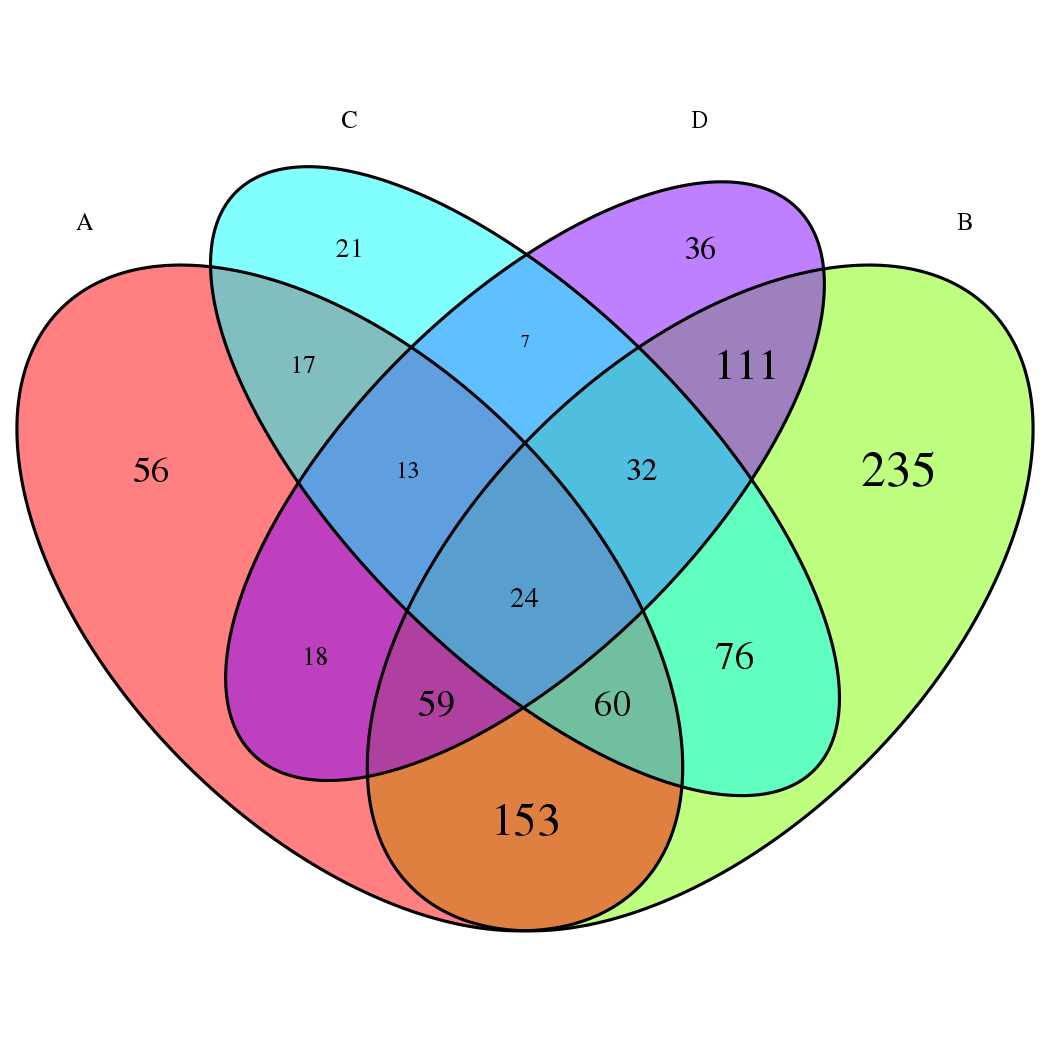
Romeo and Juliet is one of William Shakespeare’s most famous plays. It tells the tragic love story of two young teenagers, Romeo Montague and Juliet Capulet, who come from rival families in Verona, Italy. The play explores themes of love, fate, and the consequences of feuds.
Romeo, a Montague, falls deeply in love with Juliet, a Capulet, at a masked ball. Despite the ongoing hatred between their families, Romeo and Juliet secretly marry with the help of Friar Laurence. However, their love is doomed from the start, as their families’ feud leads to a series of tragic events.
The play is known for its poetic language and iconic quotes, such as “What’s in a name? That which we call a rose by any other name would smell as sweet” and “O Romeo, Romeo! Wherefore art thou Romeo?” It also features memorable characters, including Mercutio, Juliet’s nurse, and Tybalt, Juliet’s cousin.
Romeo and Juliet has been adapted numerous times in various forms of media, including film, ballet, and opera. The play continues to be popular today for its timeless themes of love and tragedy. It serves as a reminder of the power of love and the consequences of hatred and violence.
Understanding Venn Diagrams
Venn diagrams are a helpful tool for visually representing relationships between different sets of data. They consist of intersecting circles that are used to compare and contrast various elements. Venn diagrams are commonly used in mathematics, logic, and statistics to organize information in a clear and concise way.
One of the key features of a Venn diagram is the overlapping sections, which highlight the similarities and differences between different sets. These intersections show the elements that are common to two or more sets, as well as the elements that are unique to each set. This visual representation allows for easy identification of patterns and relationships within the data.
When constructing a Venn diagram, it is important to label each set and assign the appropriate elements to the corresponding circles. The elements that are common to all sets are placed in the overlapping area of the circles, while the elements that are unique to each set are placed in the non-overlapping sections. By organizing the data in this way, it becomes easier to analyze and interpret the information.
Venn diagrams can be used in a variety of contexts, including literature analysis. For example, when studying the characters in a play like “Romeo and Juliet,” a Venn diagram can be created to compare and contrast the traits and relationships of different characters. This allows for a deeper understanding of the play and the dynamics between the characters.
Key Points:
- Venn diagrams are a visual tool for organizing and comparing data sets.
- The overlapping sections of a Venn diagram show the similarities and differences between sets.
- Labeling each set and assigning elements to the appropriate circles is crucial when creating a Venn diagram.
- Venn diagrams can be used in various contexts, including literature analysis.
Key Themes in Romeo and Juliet
Romeo and Juliet, one of William Shakespeare’s most famous plays, is filled with themes that explore the complexities of love, violence, and fate. These themes shape the narrative and character development, while also highlighting the societal constraints that Romeo and Juliet face.
Love: Love is the dominant theme in Romeo and Juliet. The play explores the passionate and tragic love between the two young protagonists, Romeo and Juliet. Their love is portrayed as intense and all-consuming, transcending societal boundaries and family feuds. However, it is also shown to be impulsive and reckless, leading to their untimely deaths.
Violence: Violence is another important theme in Romeo and Juliet. The play is set in a society filled with violence and conflict, where feuds between families and street brawls are a common occurrence. The violence serves as a backdrop to the love story, highlighting the destructive consequences of hatred and revenge.
Fate: The theme of fate permeates throughout Romeo and Juliet. The play suggests that the star-crossed lovers are destined to meet and fall in love, despite the obstacles that stand in their way. The characters often make references to astrology and fortune, emphasizing the inevitability of their tragic end.
Societal Constraints: Romeo and Juliet also explores the societal constraints that limit the actions and choices of the characters. The play captures the tension between individual desires and societal expectations, particularly when it comes to matters of love and marriage. The feud between their families, the Montagues and Capulets, symbolizes the larger societal divisions that prevent Romeo and Juliet from freely pursuing their love.
In conclusion, Romeo and Juliet encompasses several key themes that continue to resonate with audiences today. The themes of love, violence, fate, and societal constraints allow for a deeper exploration of the characters’ emotions and motivations, while also shedding light on the timeless struggles faced by individuals in society.
Comparing Romeo and Juliet
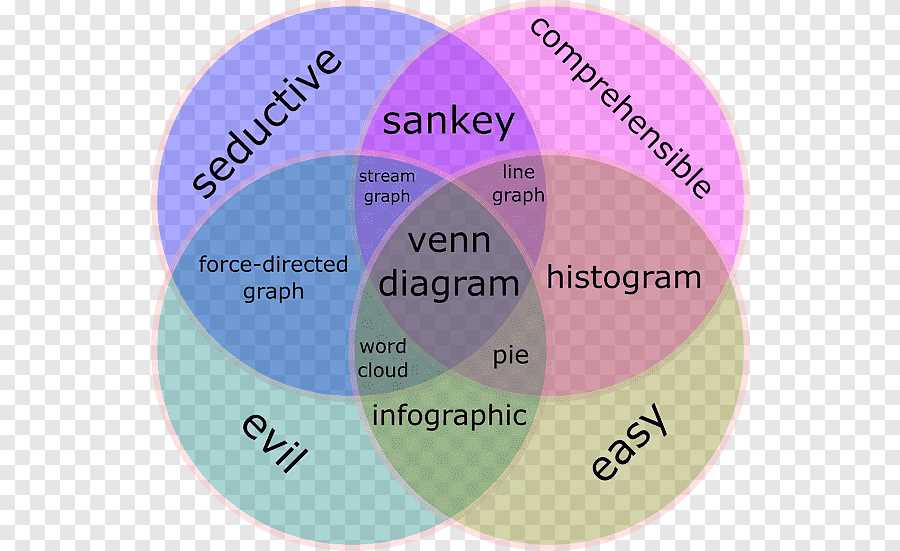
In Shakespeare’s famous tragedy, “Romeo and Juliet,” the two main characters, Romeo and Juliet, are depicted as two young lovers whose lives are intertwined in a tragic fate. While Romeo and Juliet come from different families and face various challenges, they share some similarities that make their love story so compelling.
1. One of the key similarities between Romeo and Juliet is their intense passion. Both characters are driven by their emotions and are willing to go to great lengths for their love. Romeo’s infatuation with Juliet is evident from the moment he first lays eyes on her, and he is willing to risk everything, including his own life, in order to be with her. Juliet, on the other hand, is willing to defy her family and societal expectations in order to marry the man she loves. Both Romeo and Juliet are willing to defy all odds and even face death for their love.
2. Another similarity between Romeo and Juliet is their young age and naivety. Both characters are depicted as young teenagers who are experiencing love for the first time. Their naivety is evident in their impulsive actions and decisions throughout the play. They rush into marriage without considering the consequences, and their lack of experience leads to their untimely deaths. The young age of Romeo and Juliet adds an element of innocence to their love story and highlights the tragic nature of their fate.
3. Finally, both Romeo and Juliet are ultimately victims of their feuding families. They are caught in the middle of a long-standing feud between the Montagues and the Capulets, which ultimately leads to their tragic end. Both characters are torn between their loyalty to their families and their love for each other, and this conflict plays a significant role in their downfall. Their inability to escape the constraints of their families’ hatred ultimately leads to their untimely demise.
In conclusion, Romeo and Juliet share a deep passion for each other, are both young and naive, and ultimately become victims of their feuding families. Their similarities, along with their tragic fate, make their love story one of the most iconic and heart-wrenching in literary history.
Contrasting Romeo and Juliet
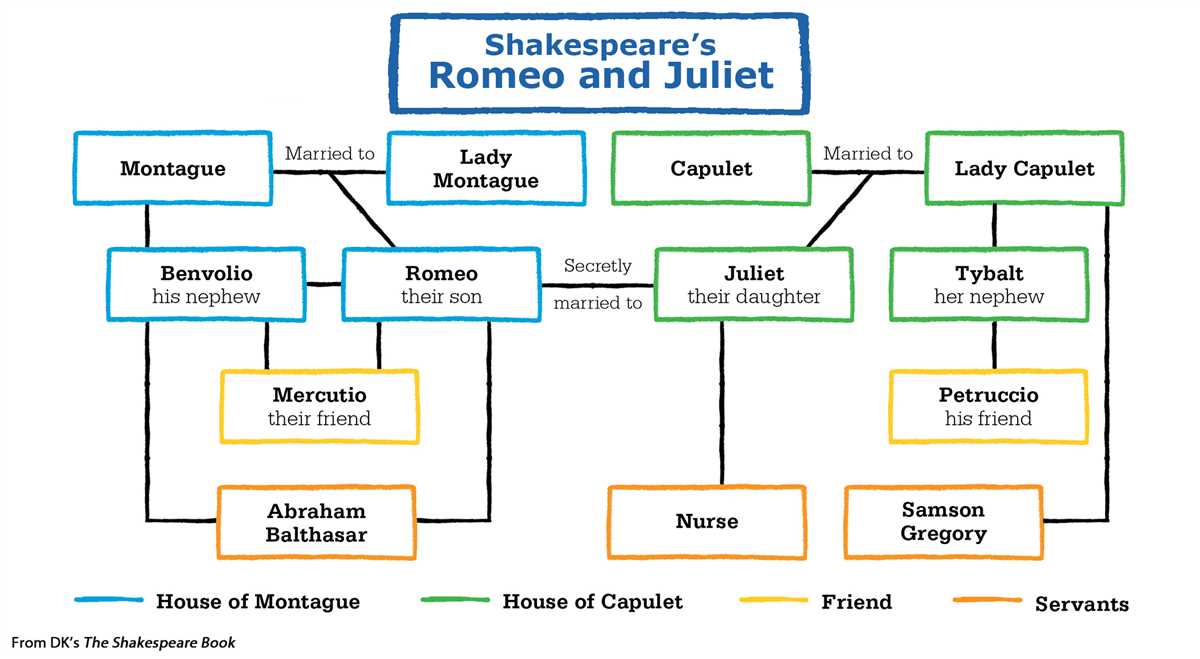
Romeo and Juliet, the iconic characters from William Shakespeare’s play of the same name, have many contrasting characteristics that contribute to the tragic nature of their love story. While both Romeo and Juliet are young and passionate individuals who are deeply in love, their approach to love and life differ significantly.
Romeo: Romeo, a young Montague, is characterized by his impulsiveness and emotional nature. He falls in love quickly and easily, first with Rosaline and then with Juliet. His impulsive decisions often lead to tragic consequences, such as his duel with Tybalt and his eventual suicide. Romeo is also prone to mood swings, going from extreme happiness to despair in a matter of moments.
Juliet: Juliet, on the other hand, is more level-headed and pragmatic. She knows the consequences of their forbidden love but is willing to risk it for the chance to be with Romeo. Juliet displays strength and courage when she defies her family’s wishes and secretly marries Romeo. Unlike Romeo, she carefully weighs her options and makes calculated decisions, such as taking the potion to fake her death.
In addition to their differing approaches to love, Romeo and Juliet also come from feuding families, which adds another layer of complexity to their relationship. Romeo is a Montague, and Juliet is a Capulet. Their families’ feud is a major obstacle to their love and eventually leads to their untimely deaths.
Despite their contrasting personalities and circumstances, Romeo and Juliet’s love for each other is undeniable and serves as the driving force behind the play’s tragic events. Their love proves that it is powerful enough to transcend societal constraints and even death itself.
Interpreting the Venn Diagram
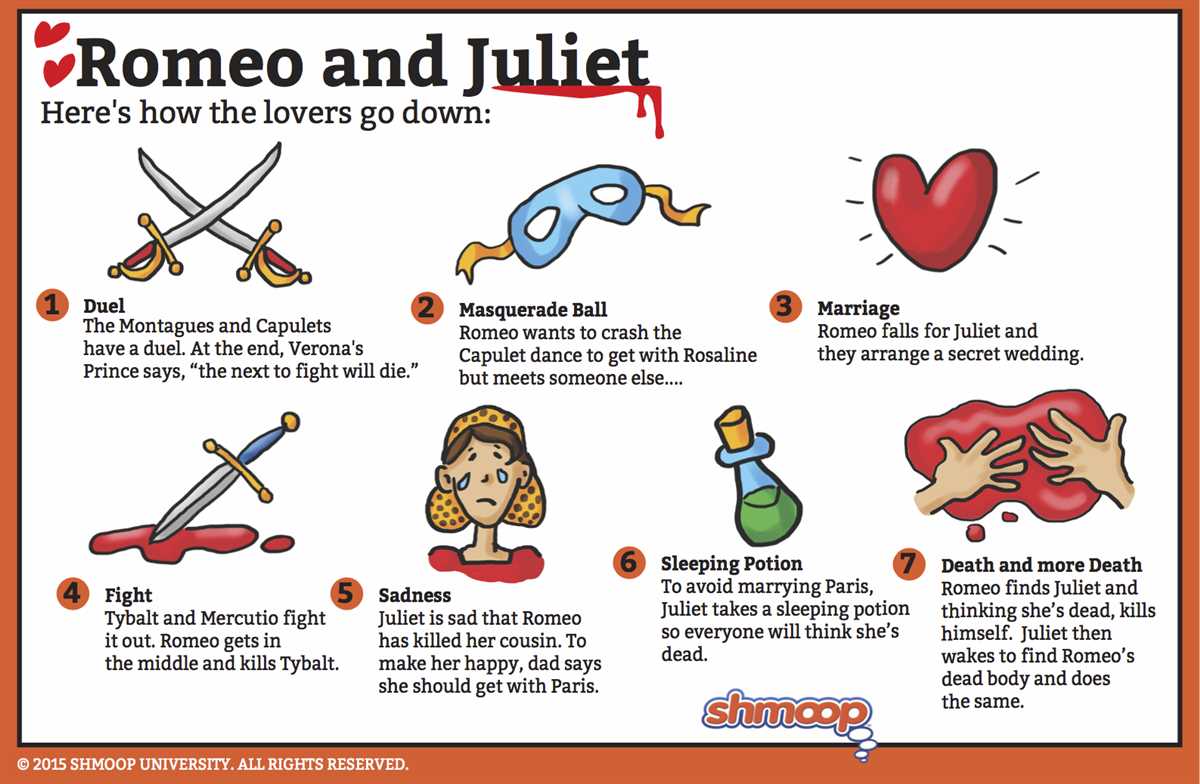
The Venn diagram comparing Romeo and Juliet allows us to visualize the similarities and differences between the two characters. The overlapping part in the center represents the traits and characteristics they share, while the separate circles illustrate the unique qualities of Romeo and Juliet individually.
Similarities:
- Both Romeo and Juliet are young lovers.
- They both belong to feuding families, the Montagues and the Capulets.
- Both characters experience intense emotions and passion for each other.
- They both face challenges and obstacles in their quest for love.
Differences:
- Romeo is impulsive and quick to fall in love, while Juliet is more cautious and reserved.
- Romeo is driven by his emotions and acts on impulse, often without thinking about the consequences.
- Juliet, on the other hand, is more level-headed and thinks before making decisions.
- Romeo is characterized by his impulsiveness and recklessness, while Juliet is portrayed as more practical and rational.
In conclusion, the Venn diagram provides a concise and visual representation of the similarities and differences between Romeo and Juliet. It highlights their shared experiences as young lovers from feuding families, as well as their distinct personalities and approaches to love. This diagram helps us understand the complexities of their characters and the dynamics of their relationship in the famous tragic play.